What if two of the greatest epics ever written— Ramayana and Mahabharata —weren’t just connected through divine figures and timeless lessons, but also through the very land they unfolded on? While the stories of Lord Rama and the Pandavas seem to belong to different worlds, their paths often crossed in some of India’s most sacred locations. These places aren’t just historical landmarks; they are living testaments to devotion, courage, and dharma.
From the serene ghats of Varanasi to the battlegrounds of Kurukshetra, these sacred sites continue to echo the footsteps of both Rama and Krishna, reminding us that the quest for righteousness transcends time and stories. Let’s explore six powerful places where the Ramayana and Mahabharata intersect—connecting the threads of history, mythology, and spirituality.
1. Ayodhya, Uttar Pradesh – The Birthplace of Rama and a Symbol of Ancient Power
 Ayodhya is synonymous with Lord Rama—it’s where his story begins. According to the
Ramayana
, it was in this sacred city on the banks of the Sarayu River that Lord Rama was born, setting the stage for his epic journey. Temples, ghats, and ancient structures still echo the legacy of his rule and his devotion to dharma.
Ayodhya is synonymous with Lord Rama—it’s where his story begins. According to the
Ramayana
, it was in this sacred city on the banks of the Sarayu River that Lord Rama was born, setting the stage for his epic journey. Temples, ghats, and ancient structures still echo the legacy of his rule and his devotion to dharma.
But Ayodhya isn’t just about Rama. The Mahabharata also mentions Ayodhya as a powerful kingdom known for its strategic importance and rich cultural legacy. It was considered one of the most influential cities of its time, highlighting its prominence even beyond the Ramayana .
Today, the recently constructed Ram Mandir stands as a beacon of faith, drawing millions of devotees who walk the sacred paths once trodden by the divine.
2. Prayagraj (Allahabad), Uttar Pradesh – The Sacred Confluence
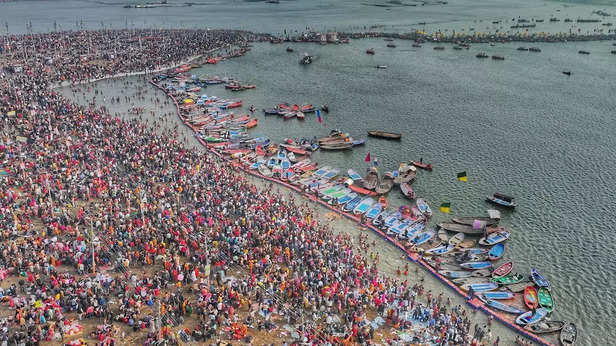 Prayagraj, previously known as Prayaga, holds deep spiritual resonance in both epics. In the
Ramayana
, it is where Rama, Sita, and Lakshmana rested during their exile, meditating at the confluence of the Ganga, Yamuna, and the mythical Saraswati rivers. This site, known as the Triveni Sangam, is believed to possess purifying powers capable of washing away sins.
Prayagraj, previously known as Prayaga, holds deep spiritual resonance in both epics. In the
Ramayana
, it is where Rama, Sita, and Lakshmana rested during their exile, meditating at the confluence of the Ganga, Yamuna, and the mythical Saraswati rivers. This site, known as the Triveni Sangam, is believed to possess purifying powers capable of washing away sins.
In the Mahabharata In Prayagraj, which stands as a holy pilgrimage site, sages conducted rituals, and the Pandavas pursued divine favor. This city’s profound spiritual heritage is vividly demonstrated through the Kumbh Mela, hosted every dozen years, symbolizing how mythology and belief persistently converge within this locale.
3. Chitrakoot, Madhya Pradesh - The Abode of Refuge and Sacred Contemplation
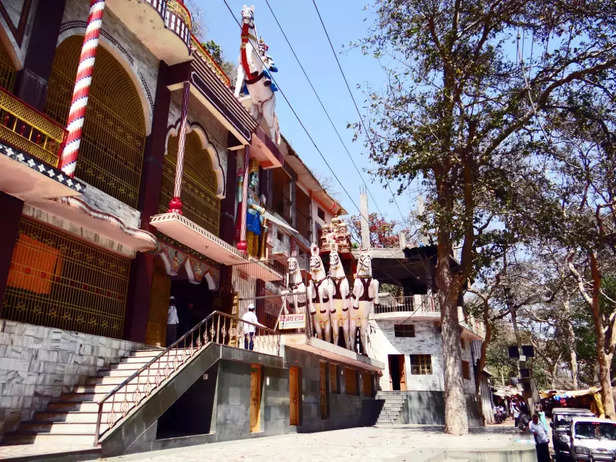 In Chitrakoot, the narrative of Rama's banishment begins. This peaceful woodland area witnessed Rama, Sita, and Lakshmana living through long periods of exile. The Bharat Milap Temple signifies the place where Bharat, Rama’s loyal sibling, implored him to come back to Ayodhya.
In Chitrakoot, the narrative of Rama's banishment begins. This peaceful woodland area witnessed Rama, Sita, and Lakshmana living through long periods of exile. The Bharat Milap Temple signifies the place where Bharat, Rama’s loyal sibling, implored him to come back to Ayodhya.
Interestingly, the Mahabharata It also highlights Chitrakoot as a holy site where hermits convened for meditation and celestial enlightenment. To this day, the tranquil riverfront steps along the Mandakini River and the historic shrines render Chitrakoot an abode of contemplation and spiritual rejuvenation.
4. Naimisharanya, Uttar Pradesh – The Eternal Forest of Wisdom
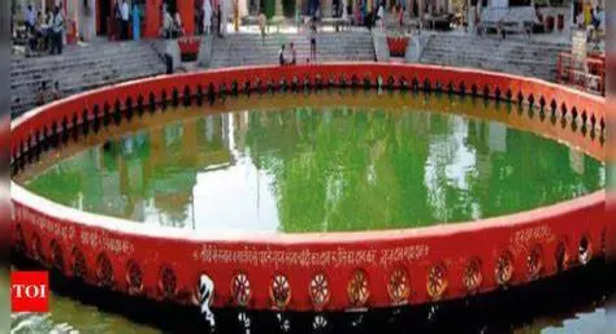 Naimisharanya, or the Naimisha Forest, holds a mystical connection to both epics. In the
Ramayana
, it’s described as a place where sages performed penance and Rama’s presence was deeply felt.
Naimisharanya, or the Naimisha Forest, holds a mystical connection to both epics. In the
Ramayana
, it’s described as a place where sages performed penance and Rama’s presence was deeply felt.
In the Mahabharata , Naimisharanya becomes the sacred ground where sages listened to the narration of the epic by Ugrashrava Sauti. It was here that Vyasa’s teachings were recorded and preserved, making it a cradle of spiritual knowledge.
Today, believers throng to the Chakra Tirtha, considered the epicenter of universal energy, aiming for spiritual illumination and tranquility.
5. Varanasi (Kashi), Uttar Pradesh – The Everlasting City of Lights
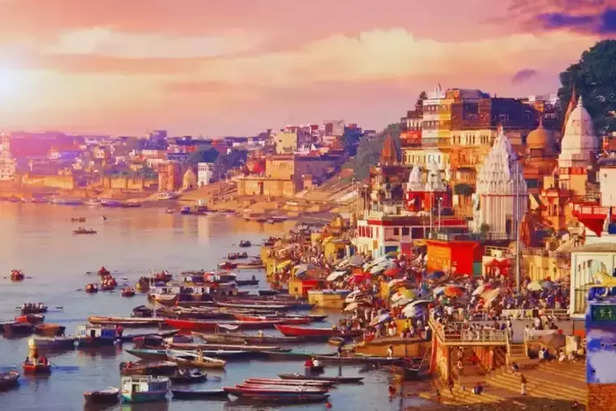 The importance of Varanasi transcends temporal and religious confines. As per tradition,
Ramayana
, Lord Rama journeyed to Varanasi to offer respects to Lord Shiva, thereby fortifying the city's link with celestial energy. Over thousands of years, the holy waters of the Ganga River and the numerous ghats of Kashi have been witness to myriad ceremonies and invocations.
The importance of Varanasi transcends temporal and religious confines. As per tradition,
Ramayana
, Lord Rama journeyed to Varanasi to offer respects to Lord Shiva, thereby fortifying the city's link with celestial energy. Over thousands of years, the holy waters of the Ganga River and the numerous ghats of Kashi have been witness to myriad ceremonies and invocations.
In the Mahabharata In "Varanasi," which holds significant importance when Bhishma takes away the daughters of Kashi, setting off one of the major disputes in the epic tale. This city remains renowned for being a hub of knowledge and spiritualism, where followers think that passing away in Kashi grants freedom from the endless cycle of reincarnation.
6. Kurukshetra, Haryana – The Ground of Righteousness
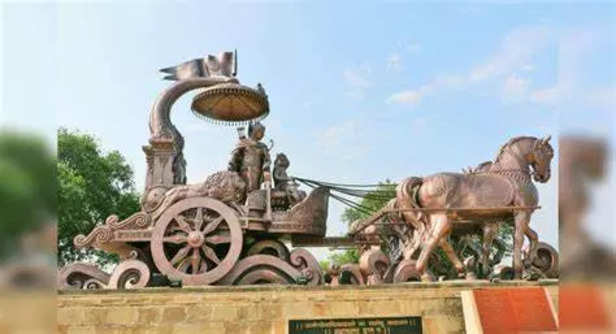 Kurukshetra is etched into history as the site of the great war of the
Mahabharata
, where Krishna imparted the Bhagavad Gita to Arjuna. This place represents the perpetual struggle between what is right and what is wrong.
Kurukshetra is etched into history as the site of the great war of the
Mahabharata
, where Krishna imparted the Bhagavad Gita to Arjuna. This place represents the perpetual struggle between what is right and what is wrong.
Nevertheless, Kurukshetra’s link to the Ramayana While lesser-known, this event holds equal significance. It is said that Lord Rama journeyed to Kurukshetra following his triumph over Ravana with the purpose of conducting yagnas (ritual sacrifices), thereby further cementing the region’s sacred status.
Today, Kurukshetra remains a potent symbol of the ethical quandaries encountered by both Rama and the Pandavas, culminating in the definitive victory of righteousness.
The Convergence of Myth and Belief
The Ramayana and Mahabharata These tales may vary, yet they all meet at these holy places, reinforcing our understanding that the journey towards virtue and piety is universal. Be it Rama's banishment or Krishna imparting wisdom on the battleground, the core messages of these narratives continue to weave the tapestry of spirituality across India.Exploring these sites is not merely about following in the footsteps of divinity; it's about uncovering inner strength, clarity, and belief through the eternal teachings of history’s most renowned epic tales. The resonant legacy of Rama’s courage and Krishna’s insight continues to reverberate across these regions, beckoning all who seek to find their personal journey toward righteousness.